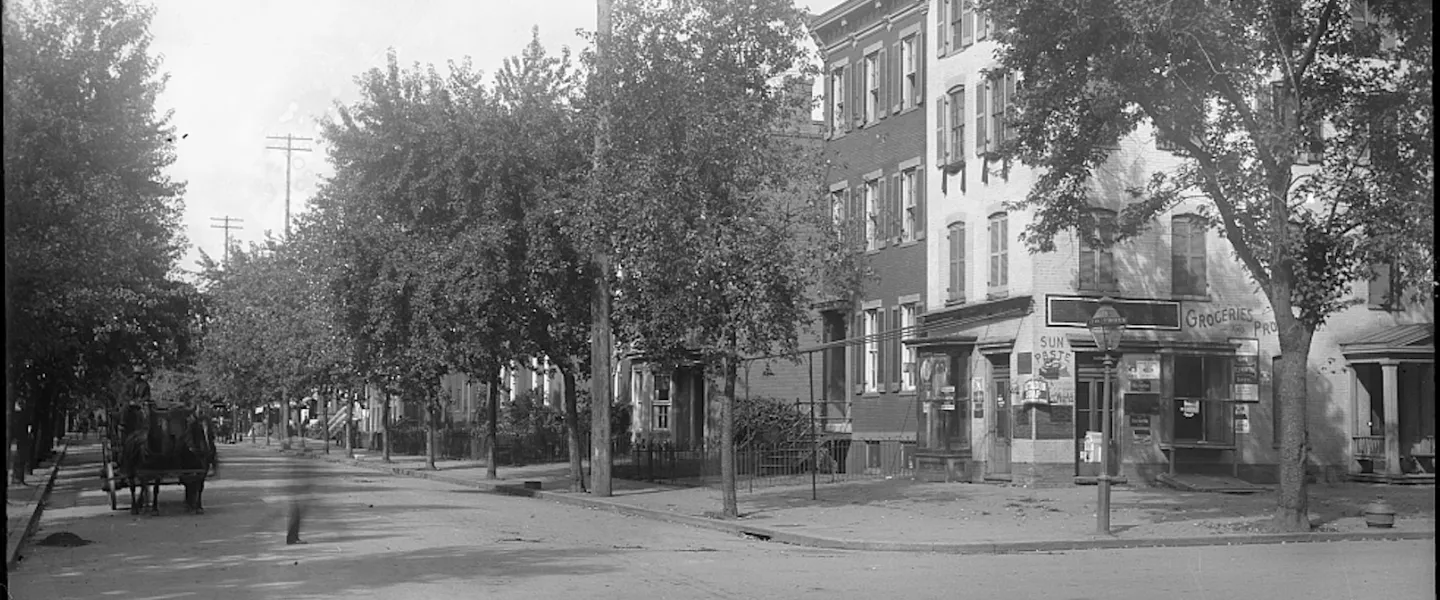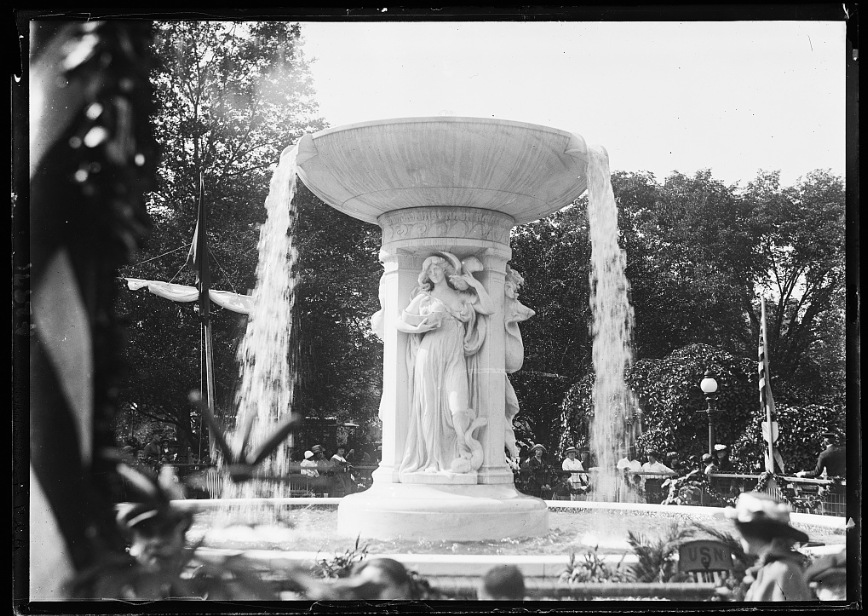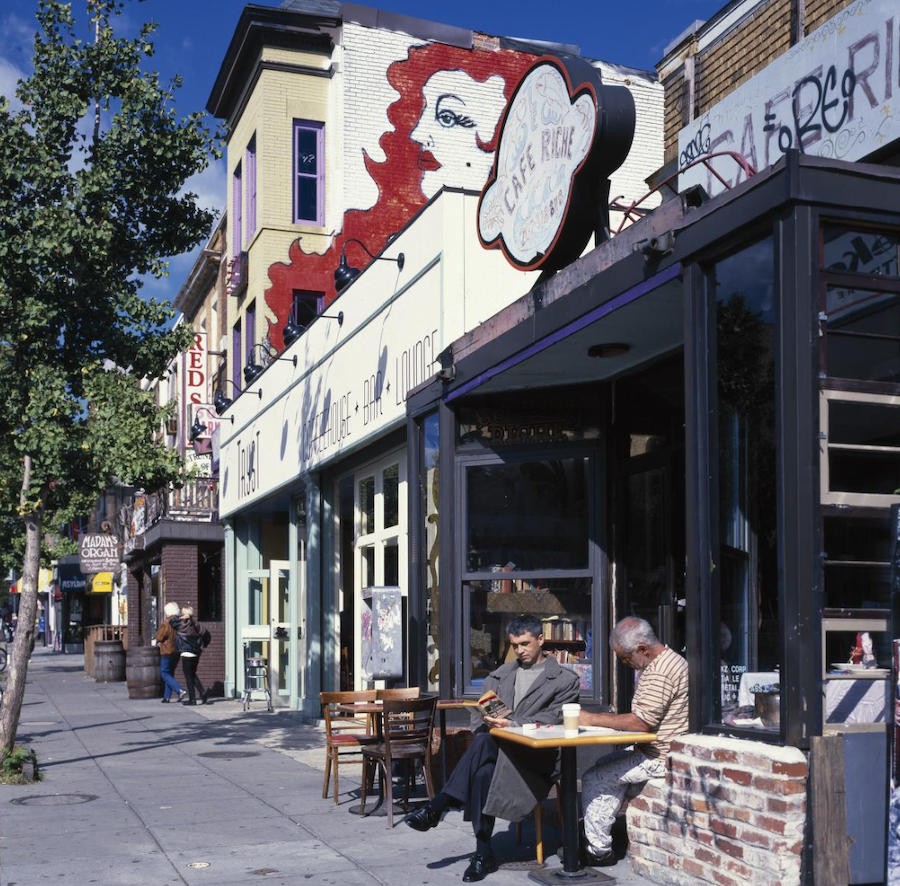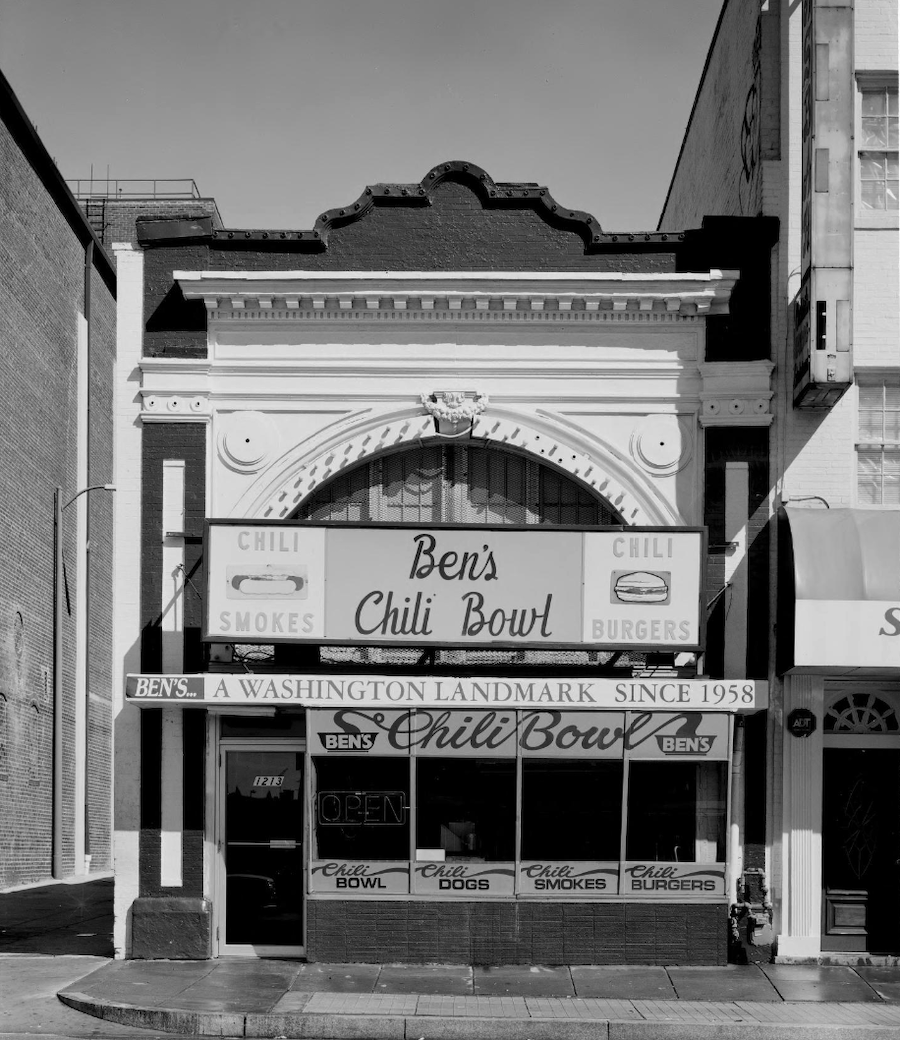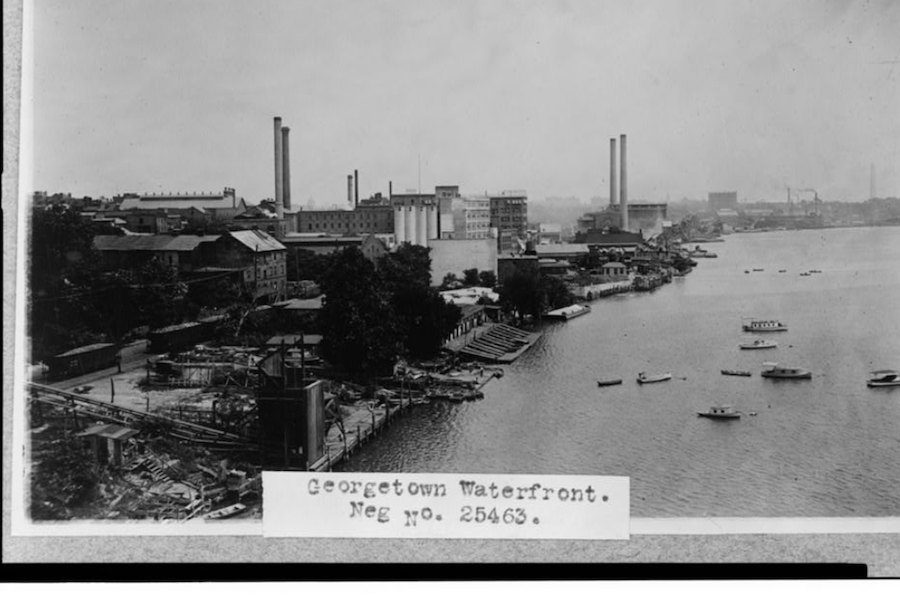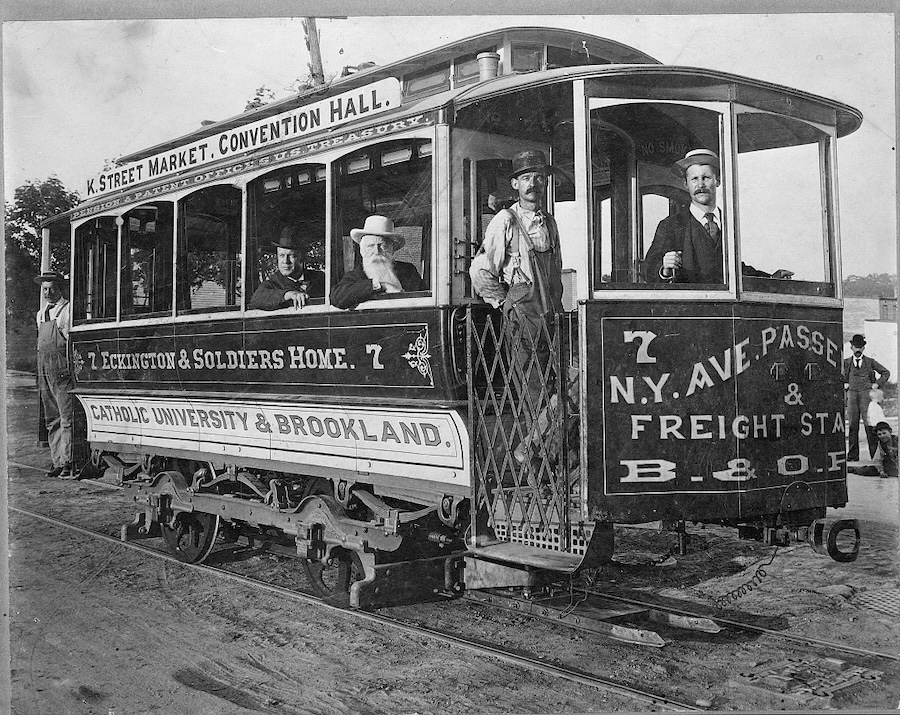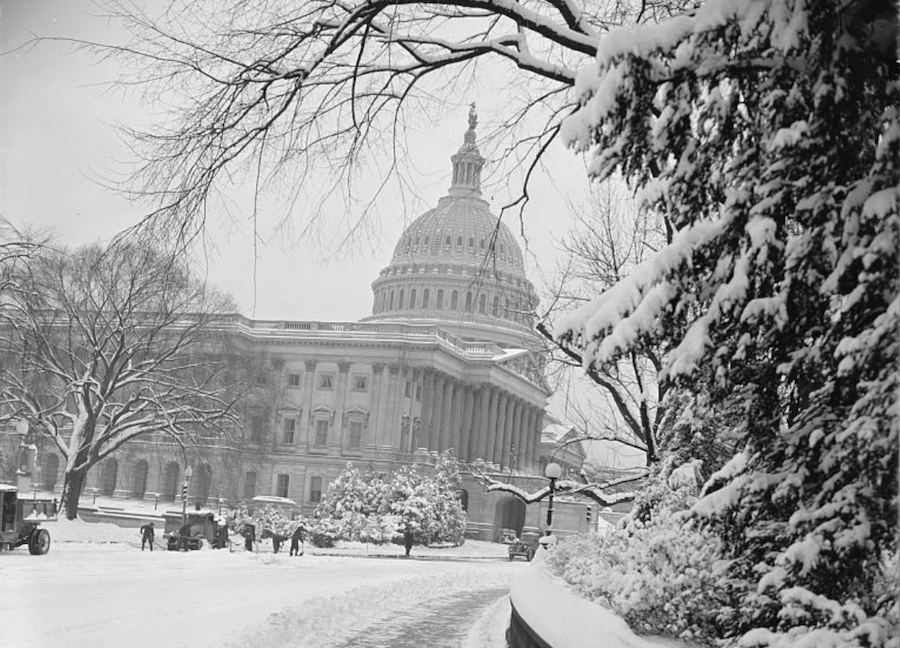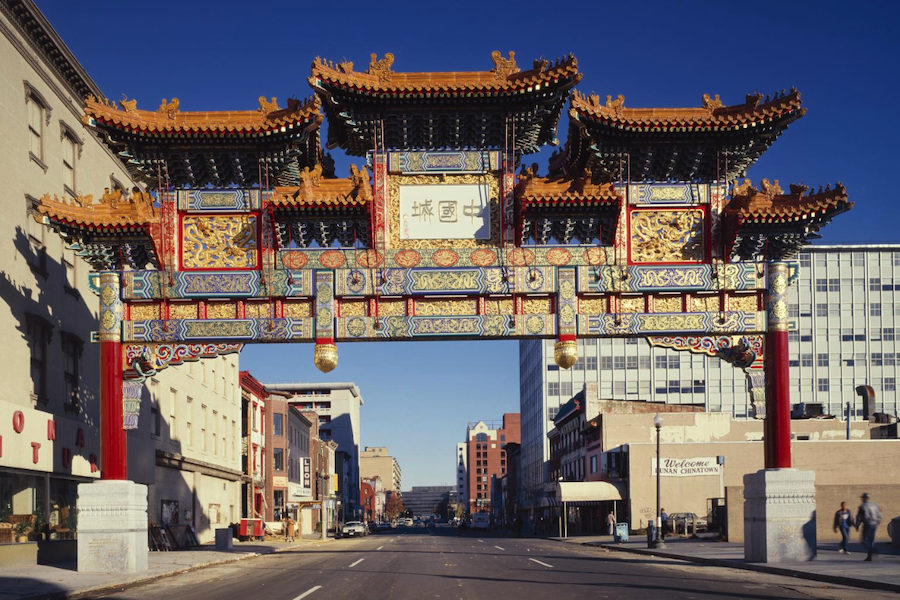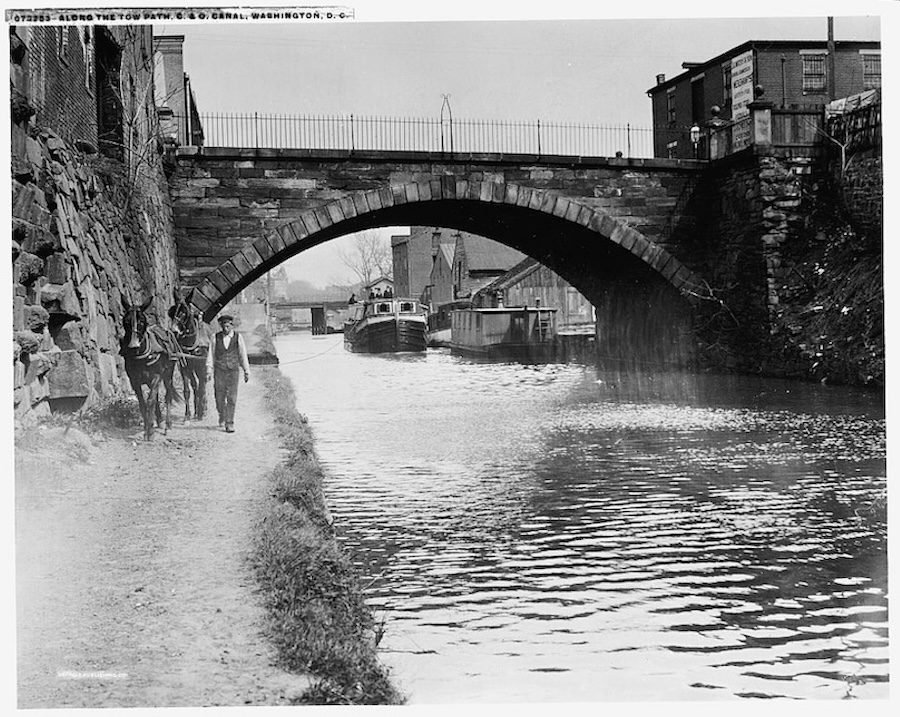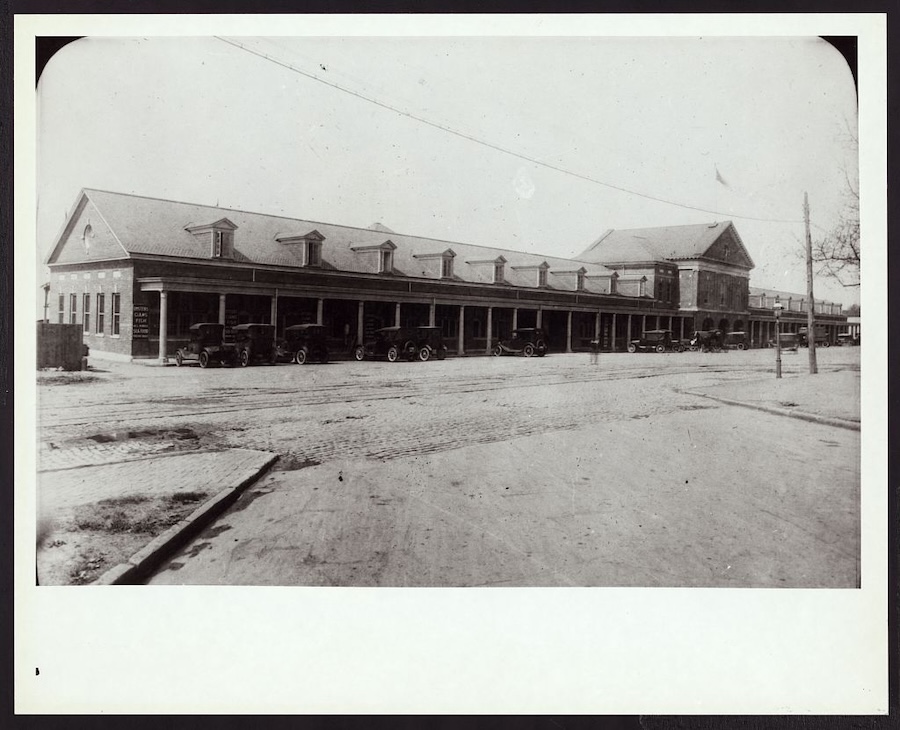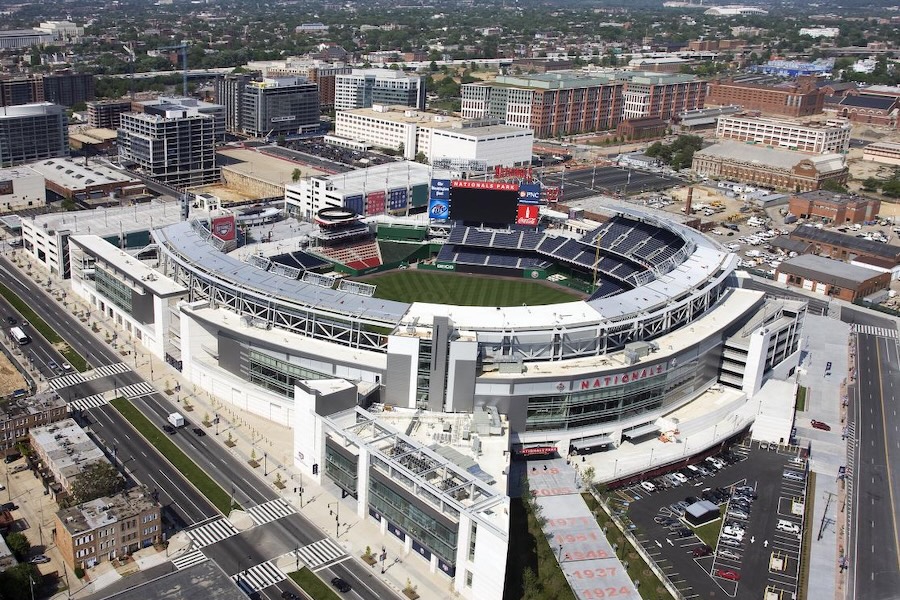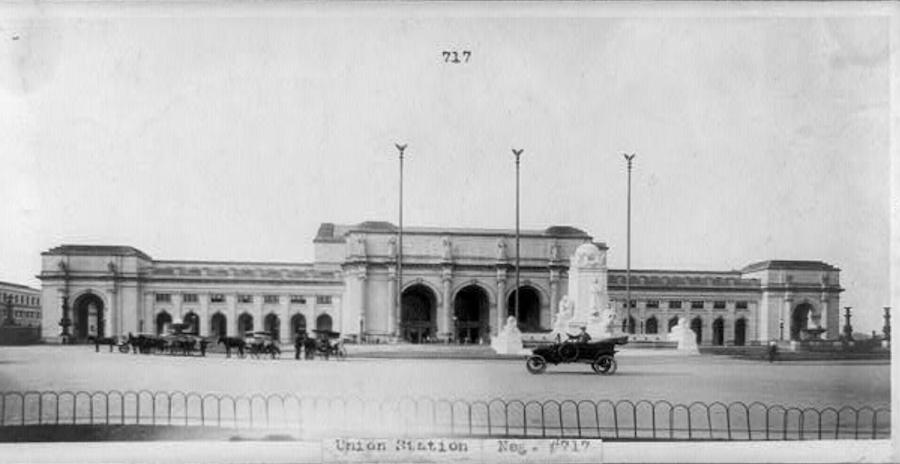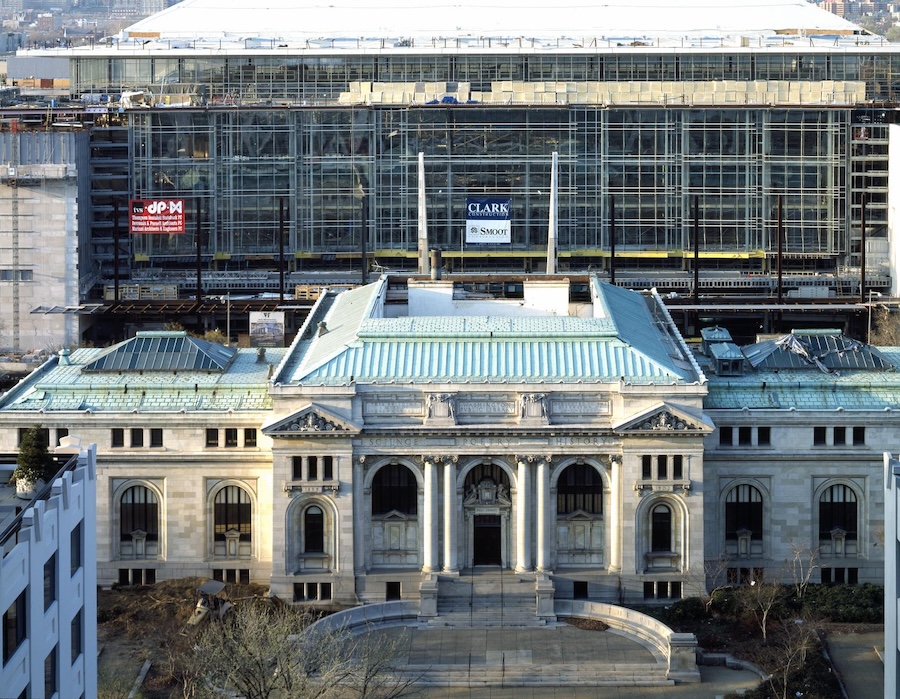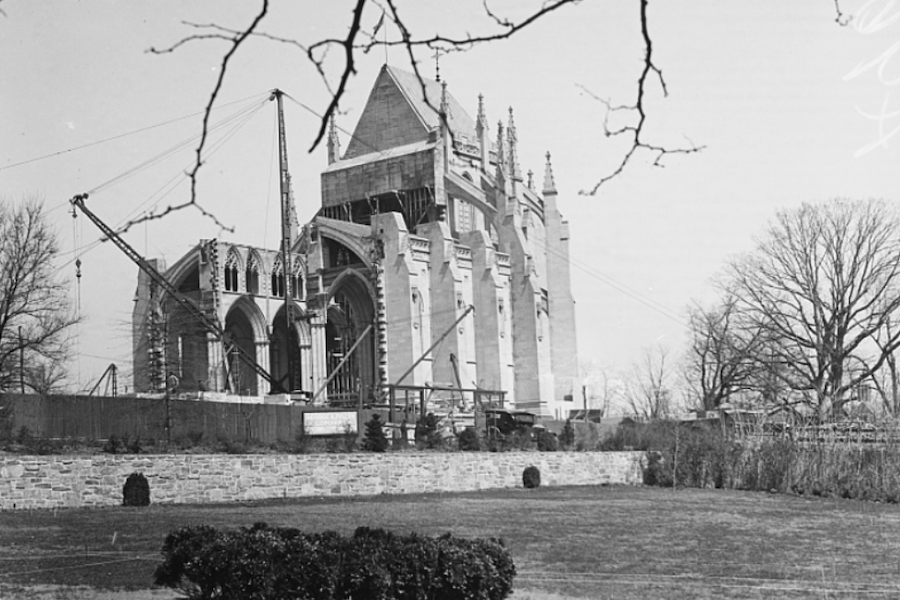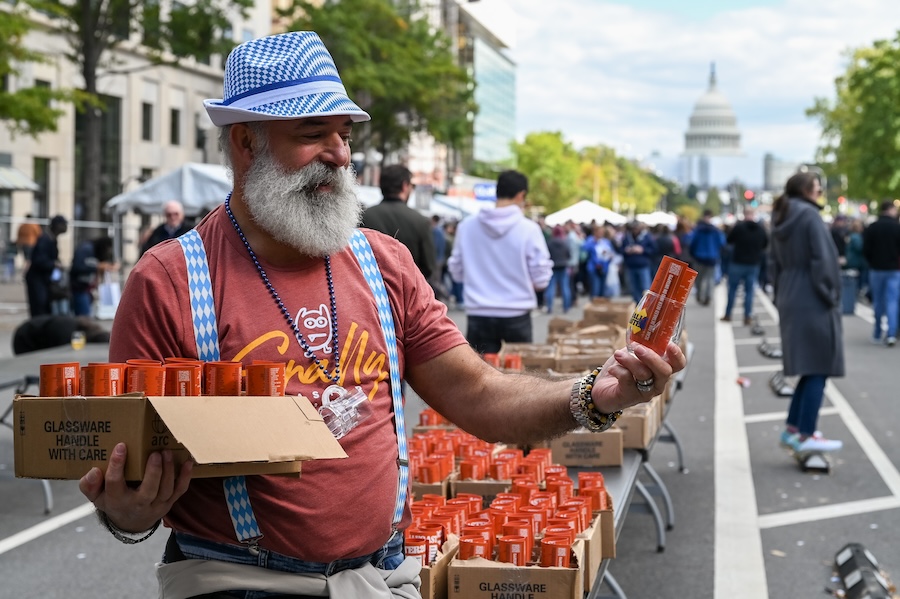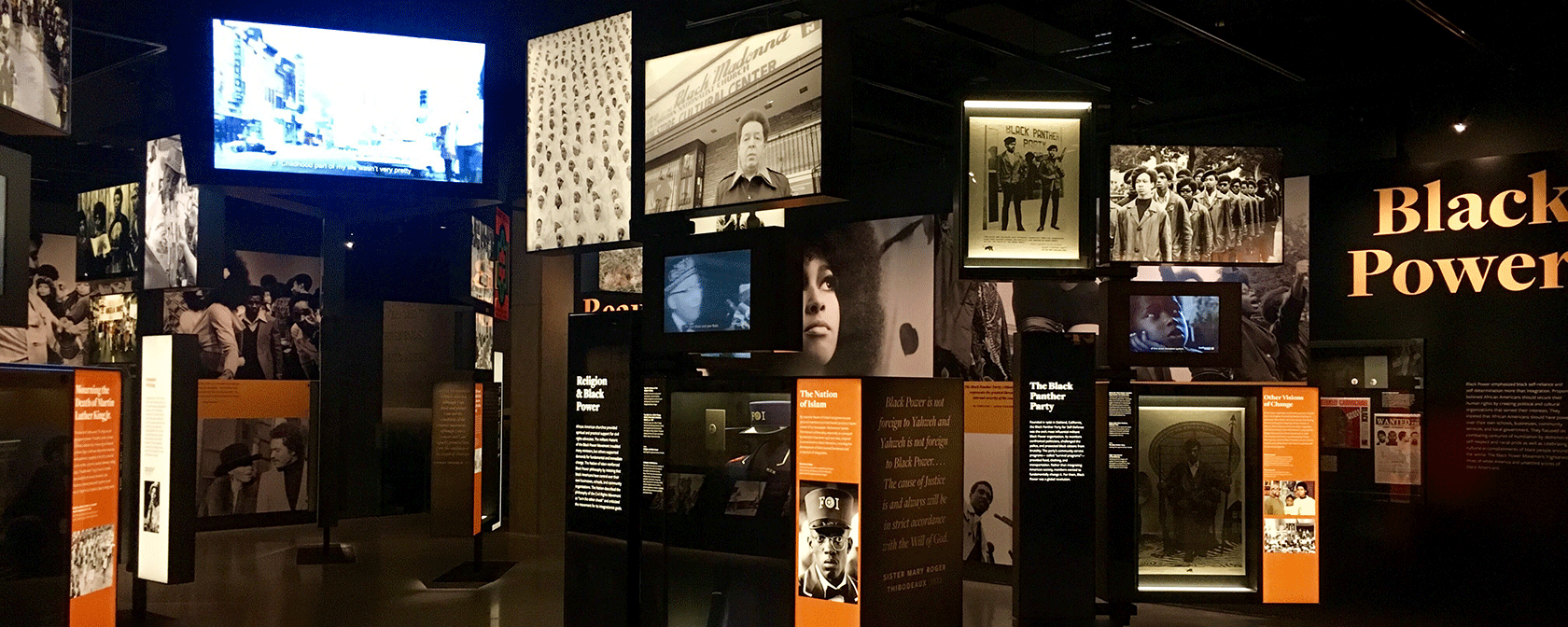The nation’s capital contains fascinating stories well beyond the National Mall.
As America’s 250th birthday nears, it’s worth reflecting on the country’s history. There’s no better place to do so than DC’s National Mall. However, the city itself and its wondrous collection of neighborhoods also have unique stories to tell.
Visit DC250.us for more details on how the District plans to honor the semiquincentennial.
Dupont Circle
Long known for welcoming LGBTQ+ residents and its gorgeous central fountain, Dupont Circle is one of the most culturally vibrant neighborhoods in the nation’s capital, with an atmosphere that can be described as “Georgetown mixed with Downtown.” For decades, the area has hosted protests, parties and a public park managed by the National Park Service.
The iconic Circle has a fascinating history all its own: Initially recognized as Pacific Circle, the Army Corps of Engineers began building what is now known as Dupont Circle in 1871. By 1884, a bronze statue of Rear Admiral Samuel Francis Du Pont had been installed in the center of the circle, honoring him for his service during the Civil War (Du Pont was widely known for making the Union blockade effective). In 1921, the bronze statue was replaced by a double-tiered white marble fountain designed by sculptor Daniel Chester French (co-creator of the Lincoln Memorial) and famous architect Henry Bacon. Three statues encircle the fountain’s central shaft to symbolize the Sea, the Stars and the Wind.
Sources: Dupont Circle BID; WETA Neighborhoods: History of Dupont Circle (video)
Adams Morgan
Now known as one of the city’s best neighborhoods for nightlife, Adams Morgan developed as an urban district in the late 19th and early 20th centuries thanks to the construction of two streetcar lines on Columbia Road and 18th Street.
Originally known as Lanier Heights, the area became fashionable and took on middle-class residents before a decline during and after the second World War, with racial tensions lingering after the international conflict. Its current name, adopted in the 1950s-60s, is derived from two schools: the predominantly White John Quincy Adams and the predominantly Black Thomas P. Morgan.
By the 1970s, the neighborhood attracted more businesses and residents, a renaissance that positioned Adams Morgan as one of DC’s most exciting areas to the present day.
Source: Adams Morgan BID
U Street
This area was rural until the Civil War, which was a catalyst for large numbers of freed Black Americans and refugees to flee the South and settle in the nation’s capital. With many residential areas filling up, these Black migrants were forced to the city’s northernmost borders.
By the 1920s, U Street had evolved into a vibrant Black neighborhood featuring Howard University and an array of entertainment venues and businesses, leading to its labeling as “Black Broadway." Numerous artists and activists settled in the area, including Duke Ellington, Langston Hughes, Zora Neale Hurston and Robert and Mary Church Terrell. The neighborhood was a hub for Civil Rights leaders in the 1960s (including the iconic Ben’s Chili Bowl) before its revitalization over the ensuing decades.
Source: Greater U Street Historic District by DC Preservation League (PDF)
Georgetown
Did you know that Georgetown is actually older than the District of Columbia? Founded as a tobacco port town by an Act of the Maryland Assembly in 1751, the area became part of DC when the city was established in 1791 and remained a separate jurisdiction until Congress revoked its independent charter in 1871.
The neighborhood is home to the oldest standing building in the District (the Old Stone House, built in 1765) and its historic district remains remarkably intact. Visitors can explore the African American Heritage Trail while in Georgetown and take in the Chesapeake & Ohio Canal, which broke ground in 1828 in the hopes of connecting the port town to the western U.S. You can dig deeper into the area’s Native American history (which included Algonquin and Anacostian tribes) with a guide courtesy of the Citizens Association of Georgetown.
Sources: DC Historic Sites; Georgetown BID
H Street NE
Built in 1849, the H Street NE corridor added streetcars 23 years later, leading to a business boom (including the city’s first Sears department store) that continued through the mid-1900s. By 1949, buses had replaced the streetcars and by 1969, the neighborhood was in disarray following 1968 riots following the assassination of Dr. Martin Luther King, Jr.
Decades of redevelopment has restored the area to a cultural hub that city residents and visitors alike can enjoy. The neighborhood features the vibrant Atlas Performing Arts Center and annually hosts the popular H Street Festival.
Source: WETA Guides
Capitol Hill
What began as a small community of residences inhabited mostly by government workers has turned into one of the city’s most popular neighborhoods. When DC became the seat of the federal government in 1800, many congressmen were staying in boarding houses close to the U.S. Capitol Building. In 1801, Marine Barracks founded by Thomas Jefferson and Lt. Col. William Ward Burrows were added to the neighborhood and within decades, thousands of people were living on “The Hill” and building homes there.
Numerous can’t-miss attractions reside in the neighborhood, each with its own fascinating history; these include Eastern Market (built in 1873) and the Library of Congress (1897).
Sources: DC Historic Sites
Penn Quarter & Chinatown
DC’s original Chinatown was along Pennsylvania Avenue, where the city’s first Chinese resident registered an address in 1851. The Washington Post referenced “residences of a local Chinatown” in an 1893 edition of the paper and by the 1920s, Chinese businesses flourished in the area.
The construction of Federal Triangle forced many residents to move, with the community relocating to H Street between 6th and 7th Streets NW by the mid-1930s. DC’s Chinese population rose drastically over the next two decades before many relocated to the suburbs due to continued development of the neighborhood.
In 1986, the Friendship Archway was erected to celebrate the city’s relationship with Beijing and to mark the neighborhood as the District’s official Chinatown. The area is located within Penn Quarter, which also features Sixth and I Synagogue, where DC’s first Jewish congregation worshipped.
Source: WETA/Boundary Stones: The History & Survival of Washington D.C.’s Chinatown
Foggy Bottom
In 1763, German immigrant Joseph Funk subdivided 130 acres of land where the Potomac River meets Rock Creek, envisioning an area akin to Georgetown. Funk originally called it “Hamburg,” but it soon gained the local nickname of “Funkstown." By the 1850s, both Irish and German immigrants had populated the area thanks to jobs tied to industries along the Potomac River and the C&O Canal. The moniker “Foggy Bottom” caught on thanks to fog from the river and nearby wharves descending on the neighborhood (it even brought malaria-carrying mosquitoes).
By the early 1900s, swamp and tidal flats had been filled and the National Mall extended westward. Columbian College – now known as George Washington University – established its campus in Foggy Bottom in 1912.
Source: Foggy Bottom Historic District by DC Preservation League (PDF)
Southwest & The Wharf
One of the most dynamic gathering places in the city has an enthralling history. Under George Washington’s direction, Pierre L’Enfant designed a street layout of Southwest DC with a major inland seaport. The area was one of the first to be privately developed in the city. Municipal Fish Market opened in 1805 (it’s the oldest continuously operating open-air fish market in the U.S.) and by the 1830s, Southwest featured the District’s principal commercial waterfront.
During the Civil War, the area was used as a staging area for troop embarkation and following the conflict, thousands of freed slaves were drawn to Southwest thanks to affordable housing and job opportunities. In the 1930s and 40s, the Redevelopment Land Agency began urban renewal in the neighborhood and in turn displaced roughly 23,000 residents. The development saw the construction of Southwest Freeway, the relocation of Maine Avenue and the addition of a waterfront promenade and parks.
Today, The Wharf in Southwest has become the city’s premier destination for on-the-water activities and recreation along with a wealth of dining and entertainment.
Source: District Wharf
Capitol Riverfront
From the late 19th century through World War II, the riverside blocks south of the U.S. Capitol were home to the industrial Washington Navy Yard as well as metal scrap yards, concrete and asphalt plants and car repair shops. Shortly thereafter, the neighborhood had largely been forgotten.
The 1995 move of the Naval Sea Operations offices to the area brought more than 8,000 employees and triggered a decades-long revitalization that included the construction of Nationals Park, a new MLB stadium for the hometown Washington Nationals (opened in 2008). The neighborhood has been growing ever since.
Source: HillRag
NoMa & Union Market
Until the 1850s, this neighborhood (“NoMa” is short for “North of Massachusetts Avenue”) served as hunting and grazing grounds due to swampy conditions and the prominent Tiber Creek. By 1879, the Creek had been buried beneath the city streets and the Columbia Institution for the Instruction of the Deaf, Dumb and Blind – now known as Gallaudet University – had opened in the area. The construction of Union Station (built in 1907) also contributed to growth.
What is now Union Market was initially Centre Market (opened in 1871), which was torn down to make way for the National Archives. Union Terminal Market opened in 1931 with space for 700 vendors; in 1962, DC banned the outdoor sale of meats and eggs, which rapidly decreased foot traffic. A new indoor market was built in 1967 but by 1989, the area’s aged industrial spaces called for revitalization. In 2012, after a massive fire, the historic Union Market building was restored, leading to the vibrant NoMa neighborhood that thrives today.
Source: Union Market District
Shaw
A haven for escaped slaves during the Civil War, this historic neighborhood is named after Colonel Robert Gould Shaw, who led the 54th Massachusetts Volunteer Infantry, one of the first Black units utilized in the conflict. In 1867, Howard University was founded by war hero General Oliver O. Howard nearby and in turn, Shaw became a part of “Black Broadway” in the early 20th century.
Riots in 1968 caused devastation but by the 1990s, the opening of the Walter E. Washington Convention Center and a nearby Metro stop brought energy back to the area. Now, the neighborhood and its famous Blagden Alley feature one of the most exciting dining scenes in the city and a stunning array of murals.
Source: Shaw Historic District by DC Preservation League (PDF)

